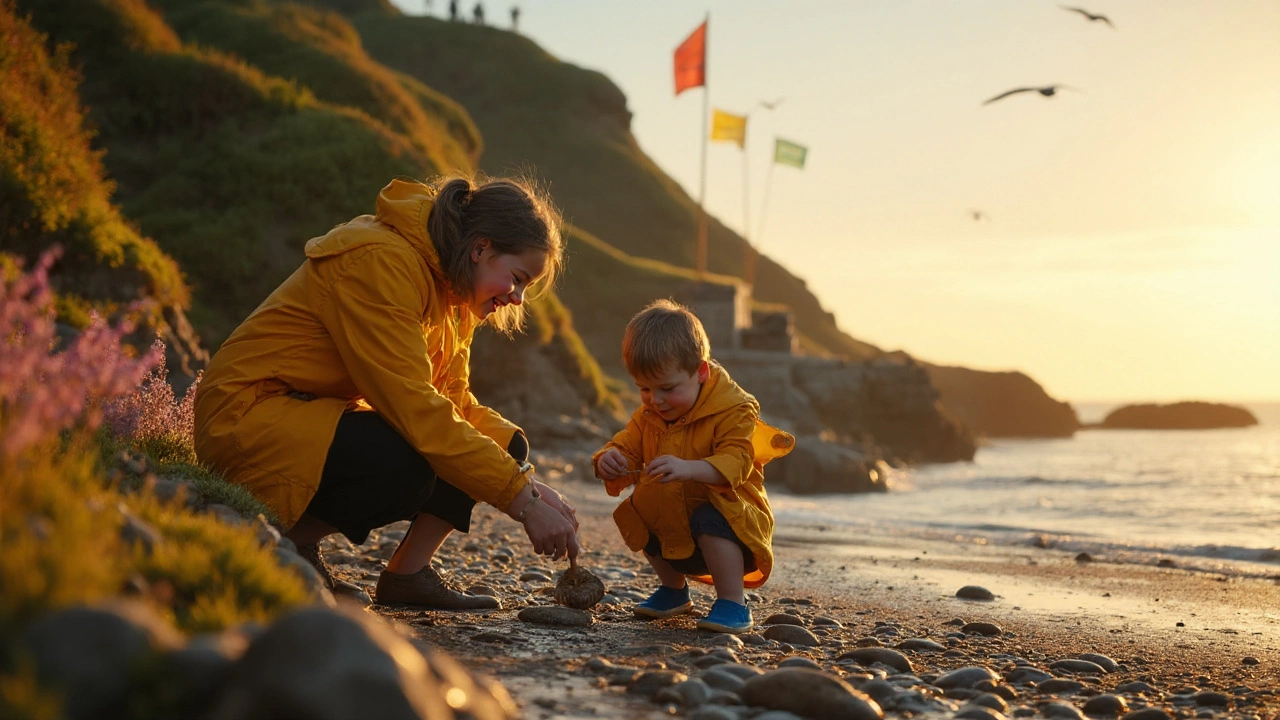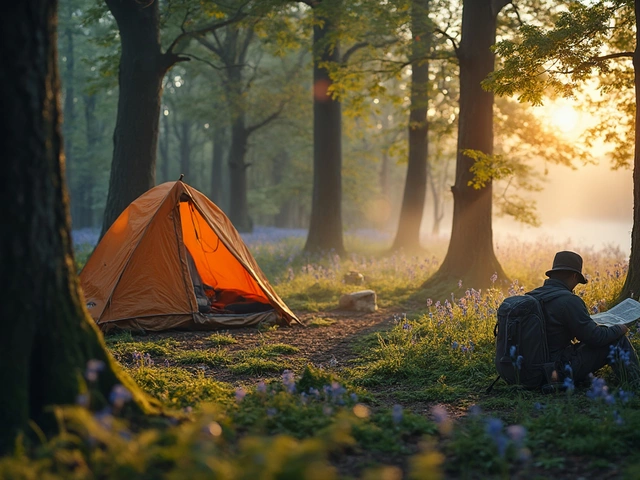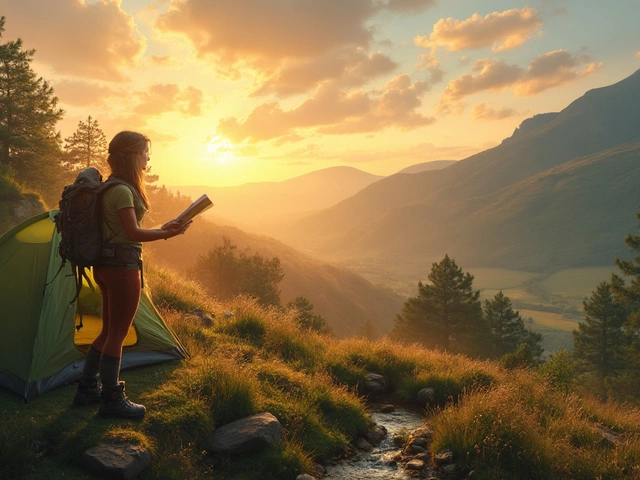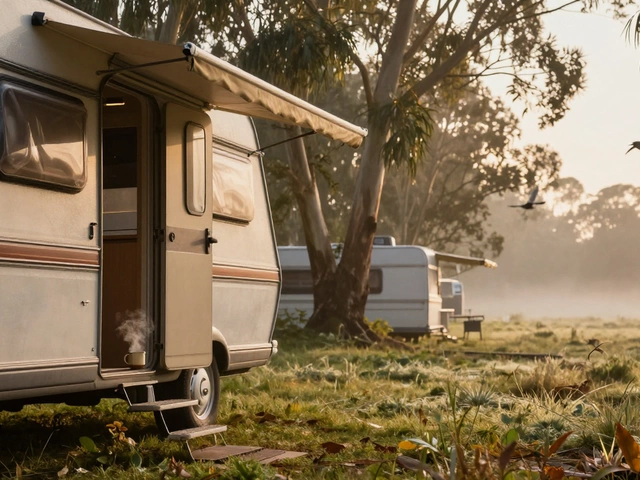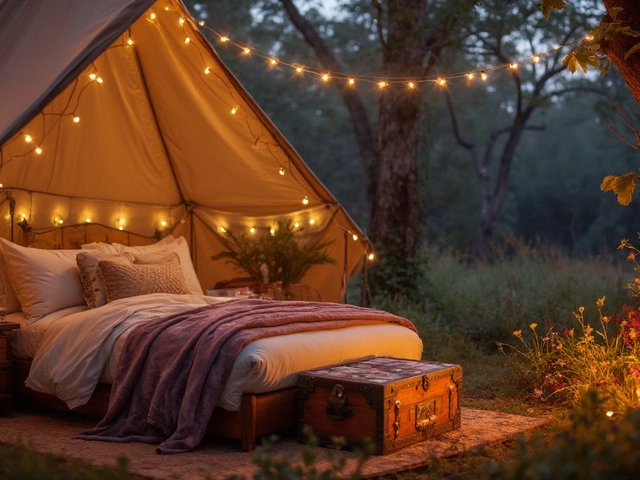That pretty shell is a tiny house, a bird’s nest, and a dune-builder in disguise. Pocket it, and you’ve quietly removed food, shelter, and future sand from the very beach you love. This isn’t about scolding; it’s about seeing what’s really going on under your feet-and walking away with a better story than a jar on a shelf.
TL;DR: Why Not Take Seashells?
Here’s the short version that gets you beach-smart fast:
- Shells are habitat and building material. Hermit crabs (more than 800 species worldwide) need empty shells to survive; shorebirds line nests with fragments; dunes get a slow drip of calcium carbonate as shells break down.
- It’s often illegal. Many parks, reserves, and countries ban collecting. Fines can sting-especially in protected areas and tourist hotspots.
- Cultural sites matter. Shell middens and coastal places hold Indigenous history; removing material can damage protected heritage.
- It spreads pests and pathogens. Wet shells can move invasive species or bacteria from one beach to another.
- There are better keepsakes. Photos, sketches, rubbings, and iNaturalist sightings preserve the moment without stripping the coast.
Now the full story, with examples, simple checks, and what to do when your kid hands you a perfect shell with hopeful eyes.
How to Enjoy the Beach Without Taking Shells
I live in Sydney and walk the shore most mornings. The urge to pocket a find is real-I still feel it when a sunrise hits a spiral just right. Here’s how I scratch that itch without harming the place I love.
seashells do three big jobs: they house critters (living snails and crabs, and later hermit crabs), they fortify dunes as they break into sand, and they feed the food web because calcium carbonate cycles through coastal systems. If you only remember one thing, remember this: an empty shell isn’t “nothing left inside.” It’s tomorrow’s home and tomorrow’s shoreline.
Start with a simple field rule:
- If you’re not 100% sure it’s legal and unoccupied, leave it.
That rule keeps you out of fines and out of trouble with the ecosystem. To go a step deeper, use these quick checks and swaps.
Quick checks before you touch anything
- Is it alive? Look for a snail’s operculum (a little door) sealing the opening; tiny feet or antennae; or any soft tissue. If yes, put it back exactly where you found it.
- Is it occupied? Hermit crabs tuck deep. If the shell twitches, feels heavier than it looks, or you see movement deep inside, set it down gently at the waterline.
- Is it wet or smelly? A damp interior, a seaweed smell, or sand sticking inside means it’s part of an active micro‑habitat. Leave it.
- Is the area protected? In national parks, marine reserves, and many council-managed beaches, taking natural objects is illegal-shells included.
Seven gratifying alternatives that don’t hurt the coast
- Take macro photos. Frame a shell with tide foam or a shadow. Print a series for your wall. It’s the same satisfaction without the removal.
- Do a "micro-trash swap." Tell kids: for every shell we admire and leave, we pick three bits of plastic. They still “collect,” but the beach gets cleaner.
- Make shell rubbings. Lay thin paper over the shell and use the side of a pencil to capture the pattern, then leave the shell where it belongs.
- Start an iNaturalist habit. Photograph and ID finds. You get the thrill of the hunt, and the data helps scientists track species and coast changes.
- Keep a tide journal. Note location, tide state, moon phase, wind direction, and what washed up. Patterns emerge, and your journal beats any souvenir.
- Sketch or watercolour. Five minutes with a pocket brush turns a find into a keepsake you made.
- Buy responsibly. If you want decor, choose reclaimed or lab-made replicas, or pieces with transparent, third‑party certifications. Ask sellers to prove legal origin; many can’t.
How to talk about it with kids (without killing the fun)
- Make it a game. Spot “homes” (hermit crab shells), “tools” (razor clam shards), and “fences” (drift lines). Leave everything; collect points.
- Give them a hero role. “Guardians put good stuff back where it helps.” Let them be the one who returns a shell to the tide.
- Reward the behaviour. A photo album or a badge on a chore chart beats a scolding on holiday.
One more sanity check: if you pick something up for a closer look, put it back as you found it-opening down if it was down, near the wrack line if that’s where you grabbed it. Small details matter to small lives.
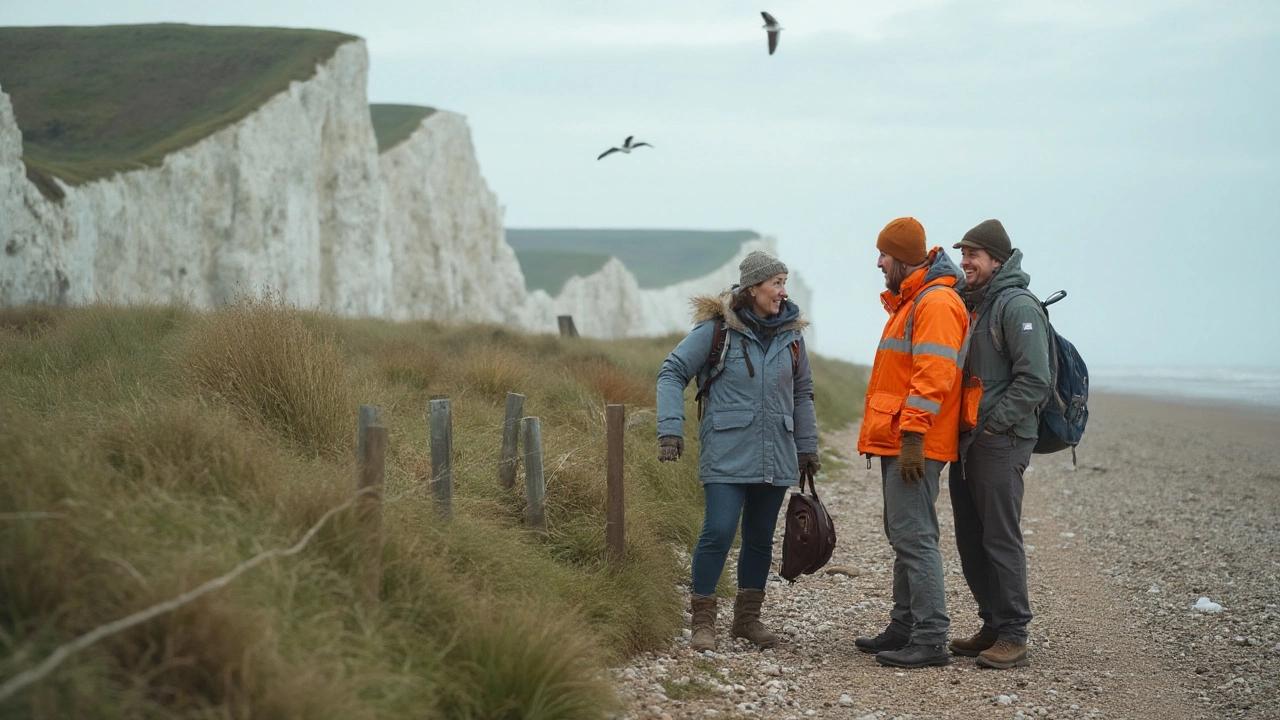
Proof, Laws, and Real-World Impacts
Does taking a handful of shells really matter? On a quiet weekday, it feels harmless. Scale it up to a busy summer and a decade of tourism, and you get a different picture.
Ecology in plain English
- Hermit crab bottleneck: Shell availability limits populations. When shells are scarce, crabs fight more, grow less, and die more often. The Smithsonian’s Ocean Portal notes there are 800+ hermit crab species; most need empty snail shells to survive.
- Bird nesting: Terns and other shorebirds often line nests with shell fragments, which help camouflage eggs and drain rain. Fewer fragments change where and how they nest.
- Dune building: Shells break into carbonate-rich grains that stiffen dunes and help them resist wind and waves. Remove enough fragments and you nudge a shoreline toward erosion.
- Micro‑habitats: Empty shells shelter worms, small fish fry, and amphipods. That “empty” shell may host an entire tiny community at high tide.
Public guidance you can trust
- The U.S. National Park Service bans collecting natural objects (shells, rocks, wood) from most parks. Rangers repeat the mantra for a reason: local removal adds up.
- NOAA’s marine educators advise leaving natural items in place to protect habitat and species that depend on shoreline structure.
- In Australia, state agencies (like NSW National Parks and Wildlife Service) prohibit removing natural objects from parks and reserves, and similar rules apply in many marine parks.
- In Europe, protected sites under national laws and the EU Habitats Directive often restrict collection; popular tourist regions have specific bans and fines.
Here’s a snapshot of what you’re likely to face in 2025. Laws change, so always check the latest local guidance on the day you visit.
| Region | General Rule | Protected Areas | Notes (2025) |
|---|---|---|---|
| Australia (NSW) | Discouraged on public beaches | Illegal in national parks and most marine parks | NSW National Parks: removing natural objects can attract fines; local councils may have by‑laws on beaches. |
| Australia (QLD) | Discouraged | Great Barrier Reef Marine Park: strict no‑take of natural materials | Permits required for any collection for research; tourists should not remove shells. |
| United States | Varies by beach | National parks: no collecting; many state parks restrict | Some localities ban taking live shells (e.g., Sanibel, Florida). Always check local rules. |
| United Kingdom | Small amounts sometimes allowed | SSSIs, reserves: removal can be illegal | Byelaws apply; taking from protected sites without consent is an offence. |
| European Union (tourist hotspots) | Heavily regulated | Protected beaches: strict bans | Sardinia (Italy) fines for taking sand, shells, pebbles; similar curbs across popular islands. |
| New Zealand | Varies by region | DOC reserves and marine reserves: no collecting | Local councils set rules for public beaches; check signage. |
A field reality check from Sydney
Weekend mornings on the Northern Beaches, you can watch the tide leave a fresh ribbon of fragments. By Monday, after the crowds, it’s thinner. When my wife Aveline and I started tallying what we saw, the pattern was obvious: high-traffic sections lost the most intact shells; quieter corners kept their texture. No lab needed-just patient looking.
What about shells in shops?
Plenty are harvested in bulk. Some come from bycatch, some from fisheries, and some from beaches where local laws allow it, but traceability is shaky. If a seller can’t tell you the species, harvest method, and legal origin, assume it’s not ethical. Reclaimed decor (say, from old craft stock) or ceramic replicas look just as good and don’t strip ecosystems.
Health and hitchhikers
- In warm months, bacteria like Vibrio species flourish. Cuts plus pocketed shells can mean infections. Low risk, real consequence.
- Algae, seaweed spores, worm larvae, and tiny snails can ride shells inland or to another coast. Drying helps, but most people move shells while still damp.
Cultural respect
Along Australian coasts you’ll see shell middens-ancient heaps built up over thousands of years by Aboriginal people. These are archaeological sites and protected heritage. Removing or disturbing material isn’t just unkind; it’s illegal. Similar protections exist worldwide. When in doubt, admire and walk on.
Checklists, Examples, and Quick Answers
Use these to make good choices fast, even with tired kids, a picnic bag, and the tide coming in.
Beach ethics checklist (fits on your phone)
- Look-don’t pocket. If it’s natural and not yours, it stays.
- Occupied? Back it goes. Movement, moisture, or a “door” means life.
- Protected area? Err on the safe side and leave everything.
- Swap the urge: photo, rubbing, sketch, or iNaturalist.
- Offset your visit: three pieces of micro-trash per person.
- Restore what you moved: flip rocks and shells back as found.
- Teach as you go: make kids the guardians, not the takers.
Decision helper: Keep or leave?
- Is it alive or occupied? Leave.
- Is it inside a park, reserve, or signed area? Leave.
- Not sure about the rule? Leave.
- You can prove legal origin and it’s allowed here? Take a photo instead-less risk, same memory.
Mini‑FAQ
- What about broken shells? Fragments still matter. Birds use them. They help build dunes. Leave them.
- Are fossil shells different? On a protected site, you can’t take those either. In unprotected areas, laws vary-many still say leave. If you didn’t dig it with a permit, don’t pocket it.
- Can I take a single shell for my kid? Ethically, no; legally, sometimes-but only outside protected areas. Better trade: one photo and three bits of trash removed.
- Is it okay to collect if I boil and sterilise at home? Sterilising doesn’t fix the habitat loss you caused. Leave it and snap a photo.
- Do beachcombing groups take shells? The good ones don’t. They document, photograph, and educate. Join those.
- Is buying shells better than taking them? Only if the seller proves legal, sustainable origin. Most can’t. Choose reclaimed or replicas.
- How do I spot a hermit crab inside? Look for a crab’s legs tucked deep, a shy movement, or a shell that’s heavier than it looks. When in doubt, don’t handle it.
Real‑world scripts you can borrow
- For a child: “This one’s a house. Want to be the hero who puts it back?”
- For a friend: “Quick check-this beach is a reserve. Let’s do photos and a micro‑trash hunt instead.”
- For yourself: “If I still want it in a week, I’ll order a replica.”
Next steps
- Parents: Set a rule before you hit the sand-no taking; photos + trash swap. Make it a contest: best pic wins dessert.
- Teachers and group leaders: Bring paper and pencils for rubbings; introduce a simple shell ID sheet for observation only.
- Photographers: Shoot a mini‑series-same shell type, different tides and light. Print as a grid.
- Collectors: Shift to documenting rare finds with dates, GPS, tide, and weather. You’ll build a dataset, not a dust trap.
- Divers and snorkellers: Don’t break corals to free shells. If you find an empty one, admire it in place; reefs are no‑take zones without permits.
Troubleshooting sticky situations
- “I picked one up and now I think it’s occupied.” Put it back near where you found it, opening facing down. If waves are strong, set it just inside the swash zone so the occupant can re‑orient.
- “My kid melted down after I said no.” Offer a trade: they choose the best photo, get to name the shell, and you print it at home.
- “A market stall is selling shells-legal?” Ask species, origin, and permit proof. If answers are vague, walk away.
- “Everyone else is taking them.” Be the person who sets a better norm. People copy what they see.
- “I found a huge stash of shells already collected.” Don’t police strangers. Quietly leave them. If it’s a protected area with clear rules, snap a general photo and report to local rangers later.
Beaches feel infinite. They aren’t. The smallest choices-yours, mine, the next family’s-are what make the place feel alive when we come back. Keep the magic where it belongs: out there, in motion, building the next tide’s story.
